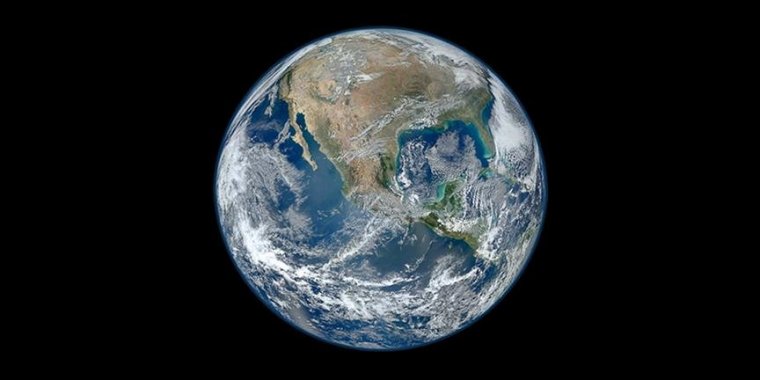| News / Space News |
Living Planet Report reveals 68% decline in global wildlife populations since 1970
The WWF’s Living Planet Report 2020 presents a comprehensive overview of the state of our natural world as captured by the Living Planet Index (LPI) of the Zoological Society of London (ZSL). Almost 21,000 populations of over 4,000 vertebrate species were tracked between 1970 and 2016, with contributions from over 125 experts from around the world.

'Blue Marble' image of Earth. Photo: NASA/NOAA/GSFC/Suomi NPP/VIIRS/Norman Kuring
“The Living Planet Report 2020 underlines how humanity’s increasing destruction of nature is having catastrophic impacts not only on wildlife populations, but on human health and all aspects of our lives,” said Marco Lambertini, Director General of WWF International.
The report shows that the main cause of the dramatic decline in species populations on land is habitat loss and degradation, including deforestation, driven by food production. Factors believed to increase the planet’s vulnerability to pandemics, including land-use change and the use and trade of wildlife, are also drivers of the decline.
Endangered species include the eastern lowland gorilla, whose numbers in the Kahuzi-Biega National Park, Democratic Republic of Congo have seen an estimated 87 percent decline between 1994 and 2015 mostly due to illegal hunting, and the African grey parrot in southwest Ghana, whose numbers fell by up to 99 percent between 1992 and 2014 due to threats posed by trapping for the wild bird trade and habitat loss.
Wildlife populations found in freshwater habitats have suffered a decline of 84 per cent - the starkest average population decline in any biome. For example, the spawning population of the Chinese sturgeon in China’s Yangtze river declined by 97 percent between 1982 and 2015 due to the damming of the waterway.
University of Cambridge zoologists Dr Lynn Dicks and Dr Edgar Turner contributed a summary of global insect decline to the report. They reveal evidence of recent, rapid declines in insect abundance and diversity in some places, but not everywhere. The researchers highlight the importance of long-term monitoring of insect abundance around the world.
Dicks, a Lecturer in Animal Ecology in the University of Cambridge’s Department of Zoology, said: “Most information about insects comes from a small number of countries in the northern hemisphere. There is very little information from large parts of the world such as Africa, South America and Asia, where land use change and agricultural expansion - key drivers of insect decline - are happening fast.”
She added: “What happens to insects matters a lot to humanity. These small six-legged creatures play central roles in the world’s ecosystems - as waste processors, pollinators, predators, and prey. Without them, humans - and all of nature - could be in a lot of trouble.”
Dr Andrew Terry, ZSL’s Director of Conservation said: “This report is clear evidence of the damage human activity is doing to the natural world. If nothing changes, populations will undoubtedly continue to fall, driving wildlife to extinction and threatening the integrity of the ecosystems on which we all depend. But we also know that conservation works and species can be brought back from the brink. With commitment, investment and expertise, these trends can be reversed.”
Stabilising and reversing the loss of nature caused by humans’ destruction of natural habitats will only be possible if bolder, more ambitious conservation efforts are embraced, and transformational changes made to the way we produce and consume food.
Changes include making food production and trade more efficient and ecologically sustainable, reducing waste, and favouring healthier and more environmentally-friendly diets. Implementing these measures together, rather than in isolation, will allow the world to more rapidly alleviate pressures on wildlife habitats. (University of Cambridge)
YOU MAY ALSO LIKE





